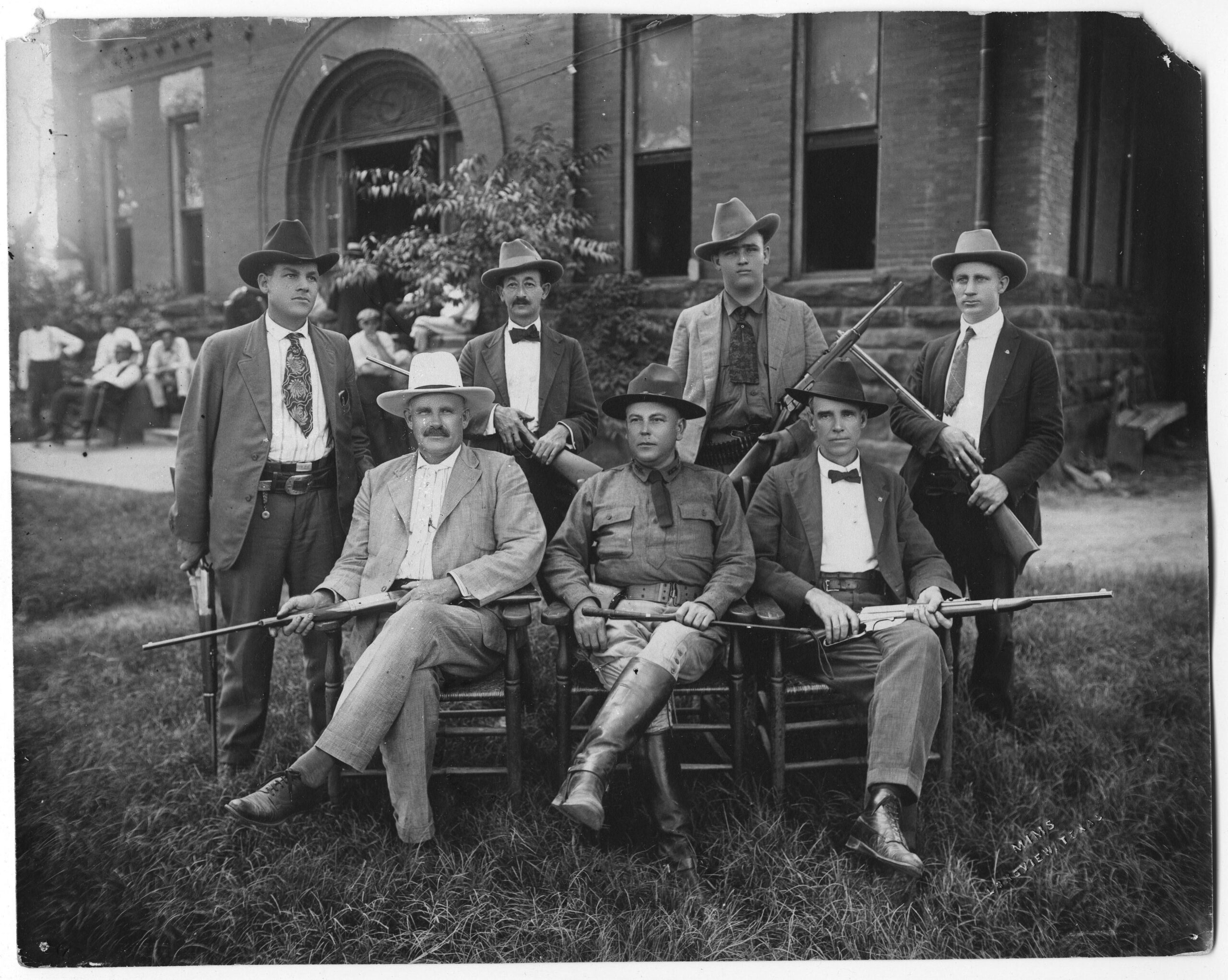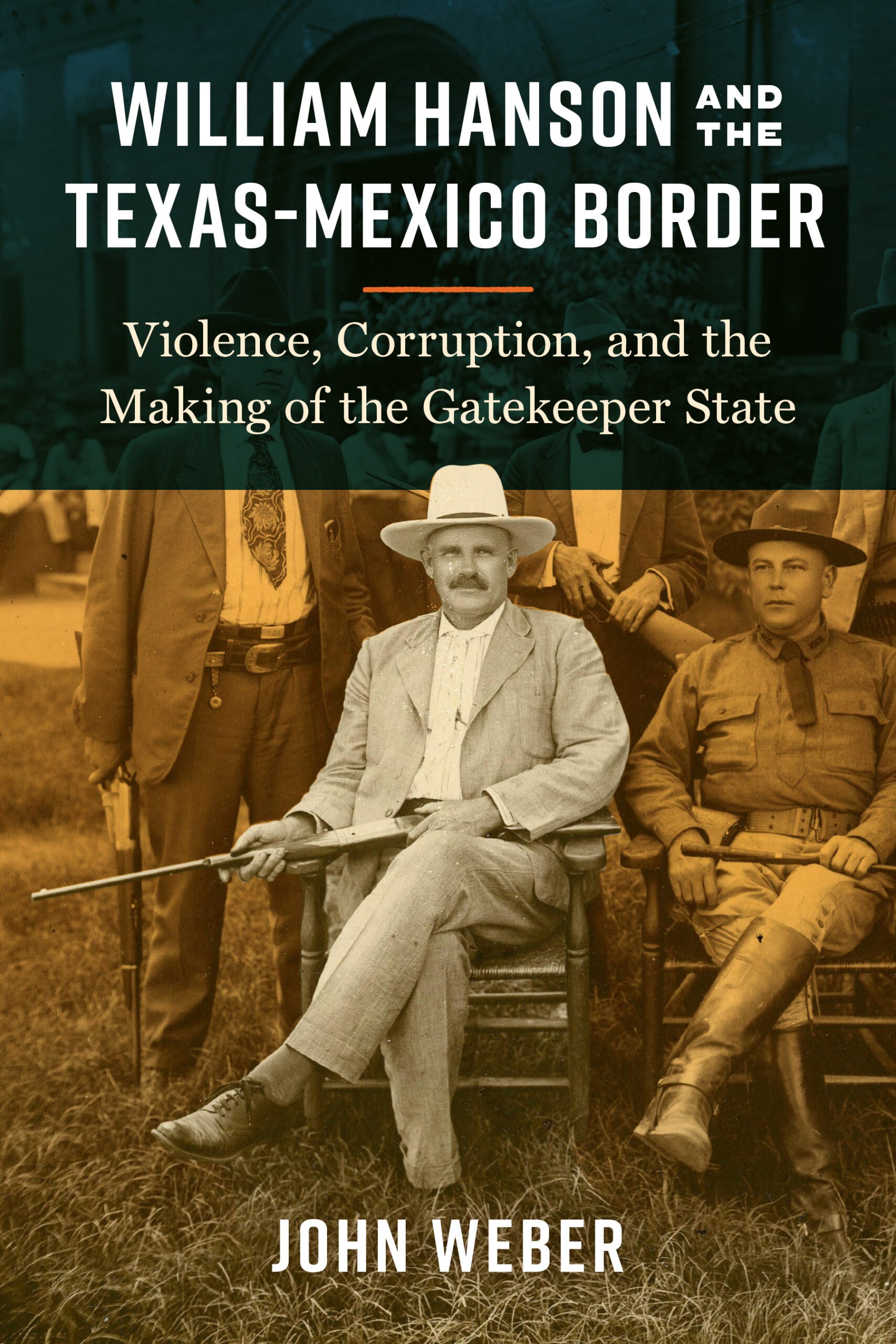
The Banality of Border Evil
What a long-dead, cartoonishly corrupt Texas bureaucrat can tell us about the nature of immigration enforcement and the U.S.-Mexico divide

A version of this story ran in the July / August 2024 issue.
William Hanson is not your typical biographical subject. Dead for nearly a century now, Hanson was never famous, nor did he ever hold elected office. He was not an underappreciated artist or a forgotten do-gooder. He was a corrupt mid-level bureaucrat—less a mover of history than a man moved by it, ever pursuing his own narrow self-interest, yielding mixed results for himself and significant harm for others. In his most influential roles, he was a captain and inspector of the Texas Rangers in the late 1910s and, in the 1920s, a San Antonio district director of what was then called the U.S. Immigration Service. From these perches, a new book argues, he played a minor but emblematic part in the advent of the “the white supremacist gatekeeper state.”
In keeping with its odd principal character, William Hanson and the Texas-Mexico Border—published in May by UT Press—is not a typical biography. There are no childhood memories or coming-of-age moments. There’s just a roughly decade-long snapshot of a crooked functionary at work in the early-20th-century Texas borderlands, deploying “methods of institutional corruption [that] have been repeated time and again in the same institutions that he represented,” writes the book’s author, John Weber, an associate professor at Virginia’s Old Dominion University who previously penned a history of labor exploitation in South Texas.
“The disgraced former Texas Ranger and long-time smuggler was now in charge of securing the border.”
Hanson was a middling member of a cohort of Anglo entrepreneurs who acquired land and oil rights in Mexico during the 34-year Porfiriato, the long dictatorship beginning in the late 19th century of Porfirio Diaz, who was friendly to foreign capital. In the early years of the Mexican Revolution of 1910, Weber writes that Hanson operated a spy ring to aid Diaz. In 1914, Hanson found himself expelled from the country under threat of execution for counterrevolutionary activities. This severed his access to land in northern Mexico that he had variously managed, owned, or coveted.
Resettled in Texas, Hanson threw himself into sundry smuggling efforts to assist anti-revolution forces in Mexico and attempt to retake his assets stranded south of the Rio Grande. He also became an informant for the Bureau of Investigation (now the FBI). Through a San Antonio political power broker and fellow meddler in Mexican affairs, Hanson was appointed to the Texas Rangers in 1917 under Governor William Hobby.
Here, Hanson’s story intersects with what Weber calls “one of the most ignominious periods in the history” of the Rangers. In 1918, years into a period of racial violence against ethnic Mexicans in the Texas borderlands sometimes known as La Matanza, Rangers and vigilantes lined up 15 residents of the tiny West Texas settlement of Porvenir and shot them. Hanson, as inspector for the Rangers, traveled to Porvenir after the massacre—not to uncover the truth but to check if an implicated Ranger captain was politically loyal to Hobby. In a 1919 legislative investigation, prompted by the Lege’s only Latino lawmaker, Hanson was accused of using his role to cover up Ranger misdeeds. But he was exonerated in the resulting white-washed committee report.
In an email to the Texas Observer, Weber said he sees his research into Hanson’s time with the Rangers as “complementing” the work of University of Texas at Austin historian Monica Muñoz Martinez, who has greatly raised awareness of the Porvenir massacre and who influenced Weber’s understanding of “violence against Mexicans and Mexican Americans along the border as a state-building tactic.”
During Hanson’s tenure, Rangers suppressed Mexican-American votes in Corpus Christi to help keep Hobby in office.
Weber historicizes Hanson’s actions as part of a much larger economic and political shift. After the arrival of railroads enabled large-scale agriculture in South Texas, a new class of investors and farm interests sought to muscle out both “ethnic Mexican rancheros” and the political machines that endeavored to purchase and control the so-called Mexican vote. To wrest control of the ballot box, these forces aimed to suppress the Latino vote altogether, sometimes under the banner of Progressive-era reform rhetoric. The endgame was “a racialized labor supply that built the farming economy but had no voice in governing.” In all this, Weber argues, the Rangers and Hanson played a crucial role.

Following his two-year stint with the Rangers, Hanson attached himself to an infamously corrupt U.S. senator from New Mexico, Albert Fall. The pair used a Senate investigation to prosecute their shared vendetta against Mexico’s revolutionary government with limited success. Fall, then interior secretary, resigned from government in 1923 as the so-called Teapot Dome scandal unfolded, but not before he put in motion an appointment for Hanson to the Immigration Service. “The disgraced former Texas Ranger and long-time smuggler was now in charge of securing the border,” Weber writes.
Once again, Hanson had inserted himself into a place and time of great historical import (by email, Weber called him “this strange, evil Forrest Gump”). The Immigration Act of 1924 would soon pass, seeking to limit immigration from Asia and Eastern and Southern Europe, and the Border Patrol would be founded that same year. Though nascent and riven with contradictions, control of the southern border was emerging as a goal.
Hanson’s corruption seemed to peak with the Immigration Service as he played a role in deporting two Mexican exiles to their deaths in what were essentially illegal extraditions. He also oversaw a smuggling ring in Laredo led by his son, then employed with the Border Patrol. By 1926, Hanson had to resign as various officials began looking into his actions, and he died just five years later.
For Weber, this tale of one man’s life ill-lived should interest modern readers because of its echoes through the present. In the decades since Hanson’s death, the United States has invested ever more in deportation and border militarization in pursuit of an illusory “security.” This criminalization generates black markets—“smuggling networks are the clearest products of efforts at border control,” Weber writes—which systematically beckon border agents toward corruption. The racial politics of border enforcement, now as ever, engender abuse. If Donald Trump is reelected in November, an unshackled immigration police force may lead us into new atrocities, and a breakdown of law in the name of law enforcement, that we have yet to imagine.
“He is long dead,” Weber writes of Hanson. “But his spirit … continues to haunt the U.S.-Mexico borderlands.”



